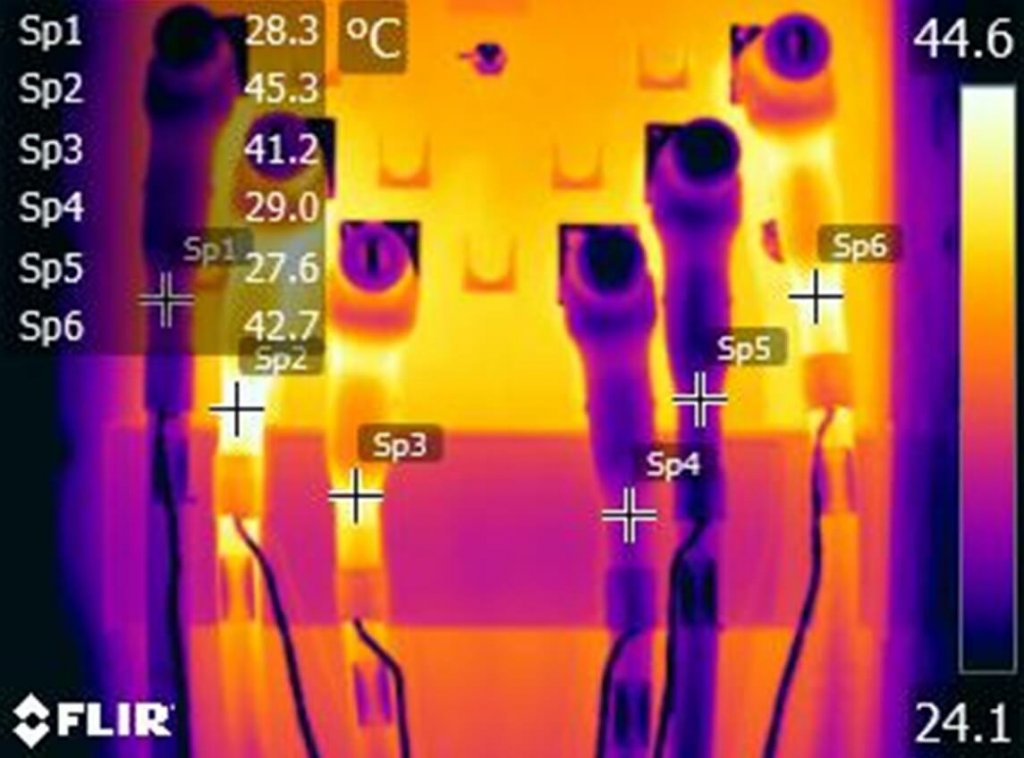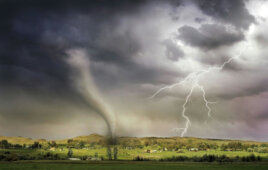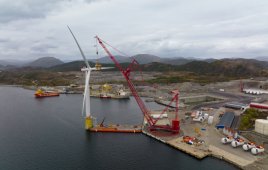Judah Moseson PE CEM, VP – Operations, Cooke Power Services
The balance of plant (BOP) is the most important link for delivering power produced by a wind farm to the marketplace. The BOP consists of the pad-mount transformer at the base of the wind turbine through to the collection system and substation. The BOP also includes transmission lines, met masts, and the roads and drainage.
While most O&M discussion focuses on components in the nacelles, the BOP equipment also needs attention. It is wise to plan for best-in-class BOP inspection and maintenance procedures to maintain a highly functioning wind farm. The inspections outlined here represent essential activities that help ensure safe and profitable operation of a wind farm.
The challenge for wind-farm owners and operators is to recognize the need to budget for these procedures. Their costs represent less than 10% of the total O&M budget of a typical wind farm. To keep that link in power production up and running, this article focuses on how to inspect the medium-voltage (MV) equipment from the pad mount transformers, collection system, substation, and the high-voltage (HV) equipment in the substation.

The IR image reveals three loose or damaged connections (SP 2, 3, and 6) at a pad-mount transformer. The six connections are the three phase 34.5kV cabling connecting this turbine to its neighbors on either side, directing power to the substation. Loose or damaged connections are responsible for the increase in heat. The good connections remain cooler.
Pad-mounted transformers
These transformers are required to take the 600 to 900V generator output and step it up to the MV of the collection system (typically 34.5 kV) for efficient transmission to the substation. The transformers have had a number of issues over the last 20 years that have required an action plan for inspection and maintenance.
IR inspection is a non-evasive examination of the transformers online and under load. The accompanying image shows loose or damaged connections.
The results of the inspection are known immediately and a brief outage is typically all that is needed to correct the issue. Without an inspection, loose or damaged connections may eventually fail, causing damage to the transformer and posing a safety risk to personnel.
Oil sampling of the transformers is a typical practice. Unfortunately, the wind industry has been slow to react to the results of this testing. A preferred action plan should be to identify the root cause of the poor test results and take corrective actions such as internal repairs followed by oil replacement. The most common test results show an increase in dissolved gasses (DG). These typically include hydrogen, methane, acetylene, ethylene, and ethane. High DG concentrations can explode when a unit is switched in and out of service.
Most sites simply hang a red lock on these units and identify them as “do not operate.” An individual wind turbine can no longer be isolated at the troubled transformer, so a turbine string outage is the only way a crew can perform maintenance on the associated turbine.
Recently, an oil-filtering method has come into the marketplace that may extend the life of transformers with high DG. This filtering process draws a vacuum on the oil reservoir and presses the oil through specialized equipment that removes the gasses and water from the oil. Results can be documented with a post-filtering oil sample analysis. This process, however, does not repair the transformer.
The breakdown of electrical insulating materials and related components inside the transformer generates the gases. Typically, the replacement cost of a pad mount transformer ranges from $25,000 to $60,000 depending on input and output voltages.
The transformer will still produce DG, but it may provide for an extended period of safe operation until the gas level becomes too high again. Periodic oil sampling will let an owner or operator know if this process results in months or even years of normal operation.
Transformer vaults are the pedestal pad-mount transformers rest on. An initial practice in the wind-farm construction industry was to set transformers on vaults made of fiberglass. In some instances, fiberglass vaults have proven inadequate. Inspections showed the transformers leaning, sinking, or moving past the limits of the cables buried beneath them. A typical response is to replace the fiberglass vaults with precast concrete vaults. This repair is sufficient to solve the problem for the life of the plant.
The collection system has several supporting components but the single most important one is the connecting MV cables. MV cabling runs between the pad-mount transformer at the base of the wind turbine and substation, and is either above ground or below.
Above-ground MV circuits require more inspection and maintenance than below-ground options. The same IR inspection performed on the pad-mount transformers can identify loose or damaged connections. Additionally, the visual inspection of poles and mounting equipment is required to ensure the collection system is in good working order. Birds and reptiles tend to nest on and climb on these structures. Fortunately, a range of hardware attachments is available to discourage wildlife from homesteading on this equipment.
Below-ground MV circuits are costlier to install but require less maintenance. The exception is an occasional ground fault or splice failure. A ground fault may occur when a cable is damaged by a sharp or heavy rock. A “Thumper” is used to pinpoint the location of ground faults, with information from the fault recording relays in the substation. Damage is repaired with a new cable splice. Many cable splices from original construction remain below ground and are a common failure point in the cable. As a result, the original splices can fail. The repair method is the same as for ground faults. It is customary to make cable splice repairs above ground and cover them with a protective splice box.
Substations contain the most typical equipment found at a wind farm. Transformers, breakers, switches, relays, and more are subject to regulatory protocols. These protocols determine the schedule and scope for inspections, and are in place to ensure safety to personnel and equipment. Most wind-farm owners or operators perform these tasks during the low-wind season to reduce their loss of generation and revenue.
The most useful tool again is the IR inspection camera because it can quickly identify loose or damaged connections within the substation. It is also important to ensure that potential safety risks, such as sufficient substation yard stone and weed control, are an essential part of the maintenance program. The yard stone serves several purposes but most importantly it provides a high resistance layer – insulation – between our foot and the ground. The weeds, if not kept under control, can quickly grow tall and may provide a path for a dangerous ground fault within the substation.
A lot can go wrong on a wind farm and not all risks are found up-tower or in the nacelle. BOP equipment, including pad-mount transformers, splices, and others are as essential for getting wind-generated power to the grid as the generator. Damage to a single splice or cable and a string of turbines can go offline. BOP equipment should also receive routine inspections to optimize wind-farm operations.
The good news is that there are highly qualified third-party service providers available to perform all the necessary inspections and maintenance throughout a wind farm’s BOP.
Filed Under: Featured, O&M






